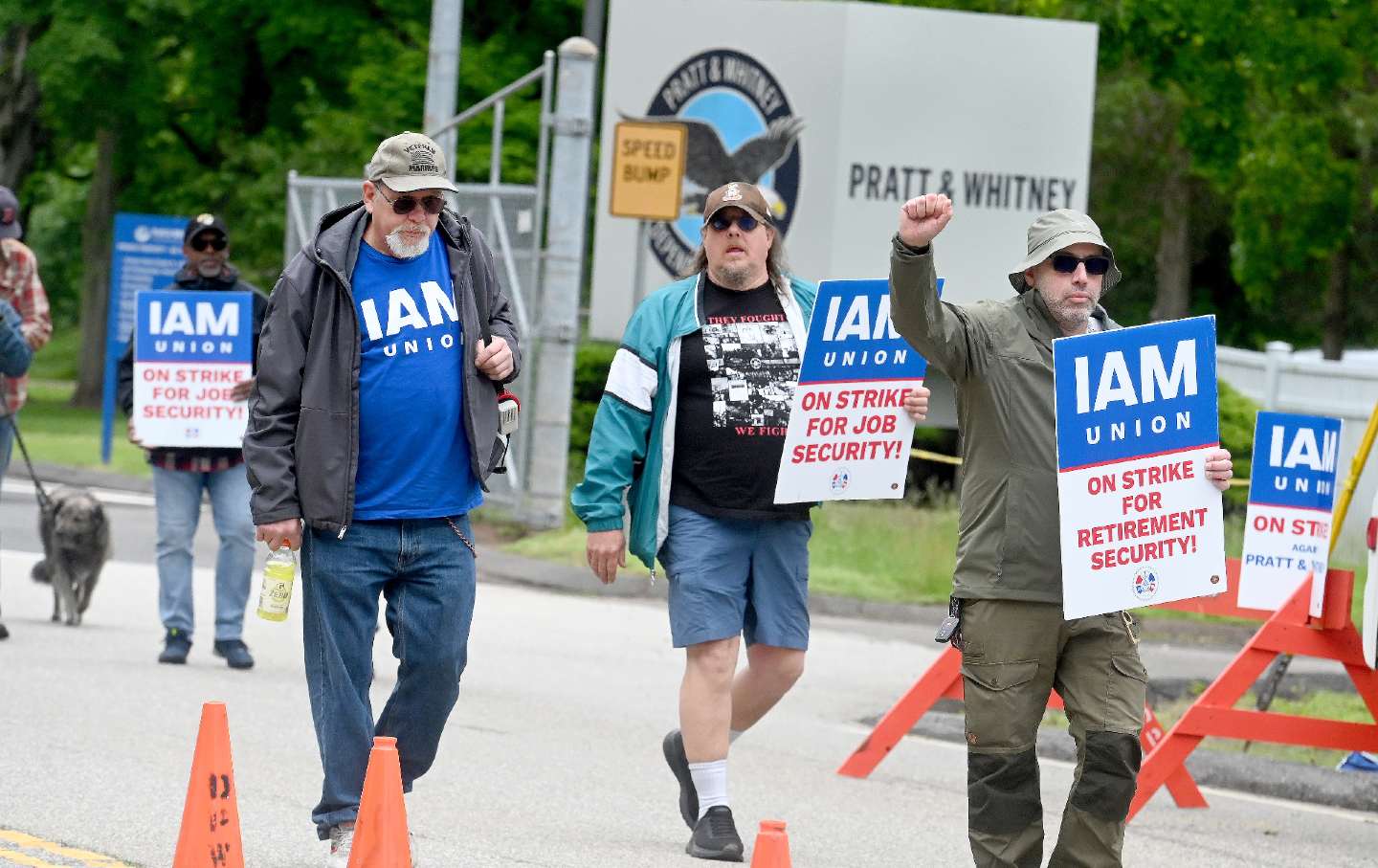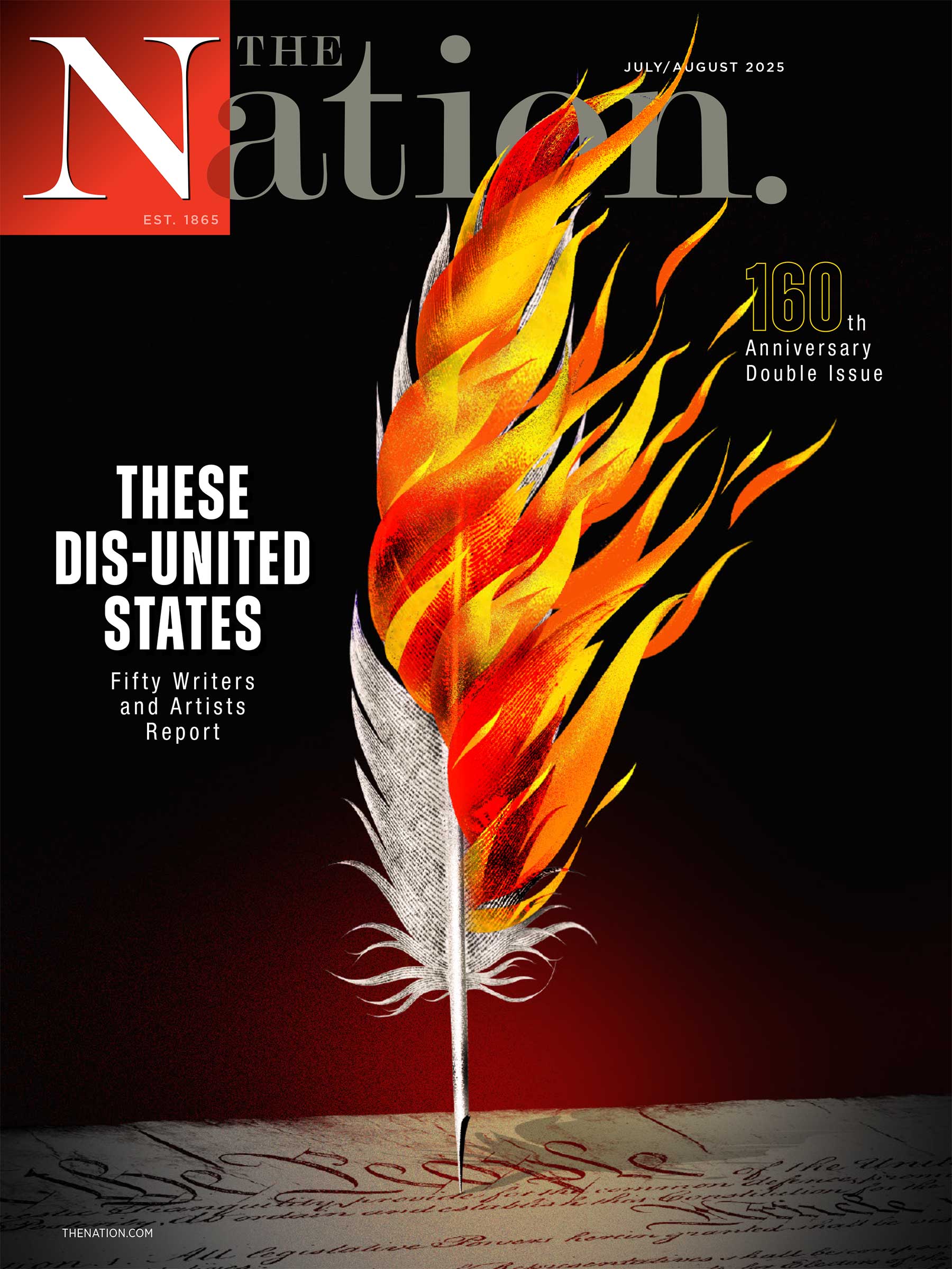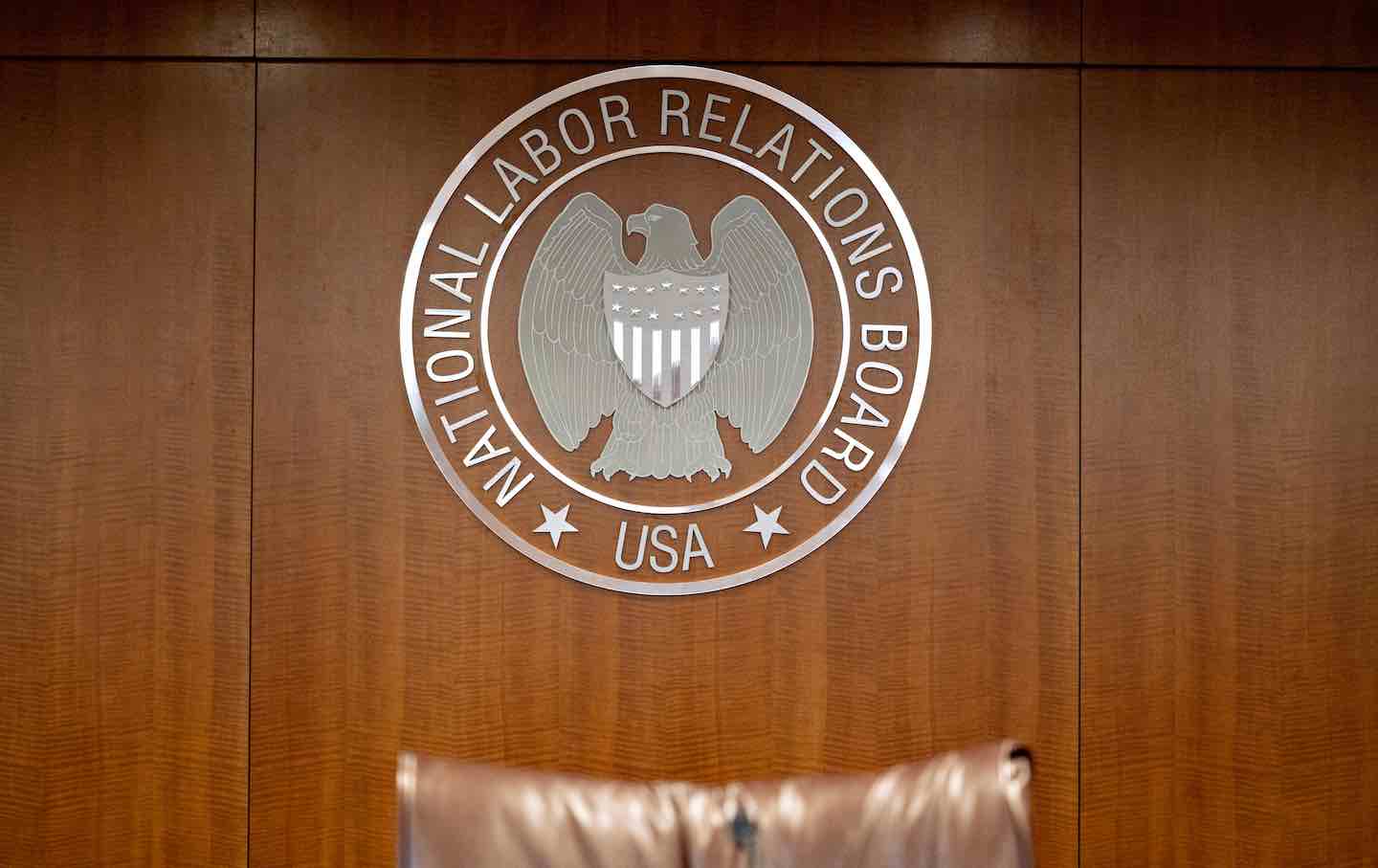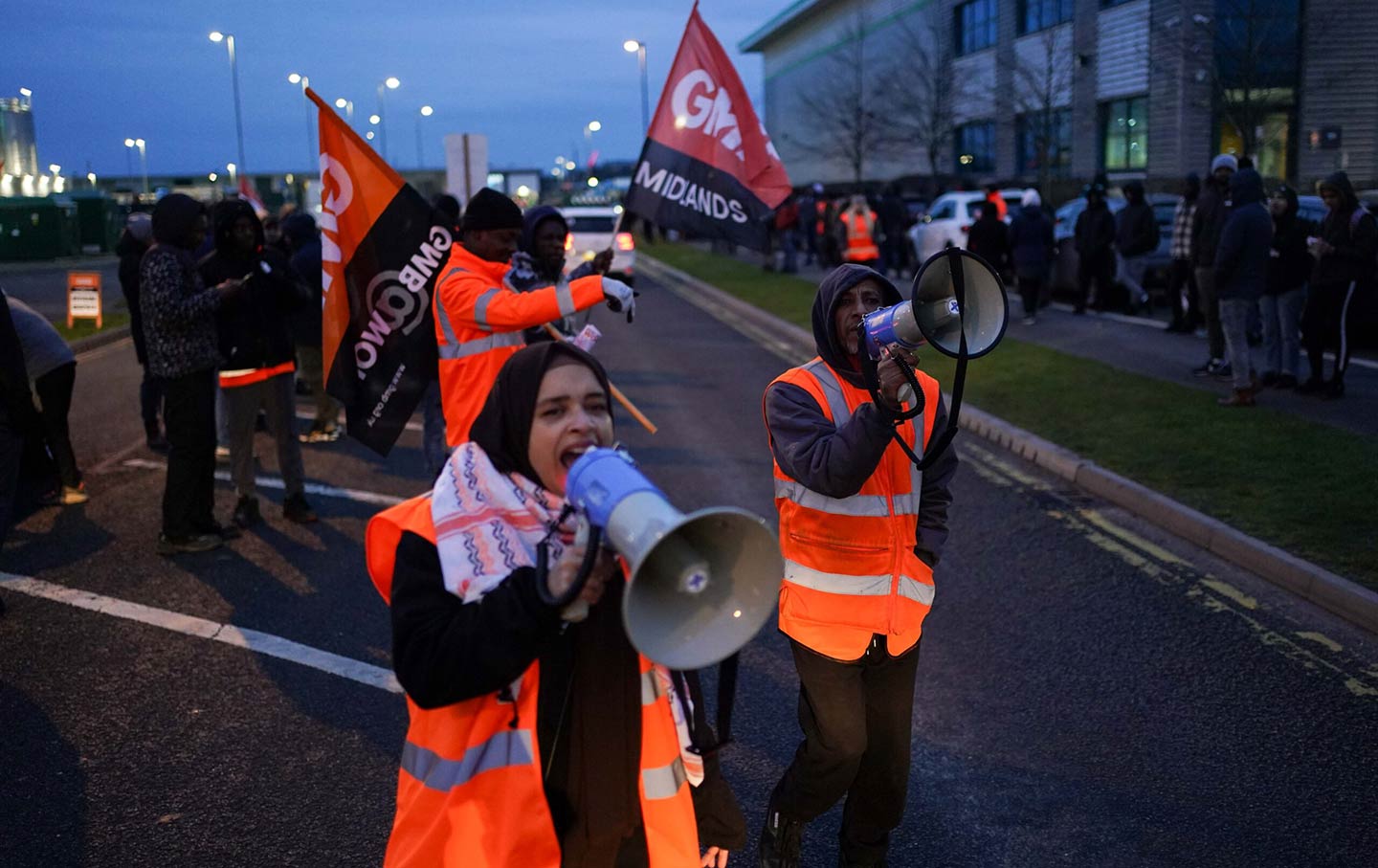July 10, 2025
The Constitution, properly interpreted, protects workers. But the Trump administration isn’t going to enforce those protections unless labor fights for them.

Over the past half century, the Supreme Court has continually twisted the Constitution into a document that is implacably hostile to workers. In 2020, a conservative majority on the court used the Fifth Amendment to strike down a California law that made it easier for union organizers to talk to farm workers. Two years before that, the court used the First Amendment to hobble public sector unions by attacking their source of funding. And just two months ago, the court issued a ruling that raised significant concerns that it may use Article II of the Constitution to end the independent functioning of the National Labor Relations Board.
These perverse interpretations of our founding charter, as amended—along with other important factors—have succeeded in frustrating the will of the majority of Americans who want to join a union. Fifty-nine percent of workers, as reported in 2022, would like to see increased unionization in their workplace, and even more support unions as a general matter. But thanks in part to the constitutional hurdles placed in their way by the conservative court and a cadre of well-funded anti-union lawyers, only about 11 percent of workers have succeeded in winning union representation.
As a result, the United States has an incredibly low density of unionized workers compared to peer nations. As Paul Krugman points out, this results in “ordinary workers lagging far behind economic growth.” Low union density depresses compensation. The vast majority of private-sector workers do not benefit from the 13.5 percent more in wages that union-represented workers earn on average compared to a peer in a nonunionized workplace in the same sector with a similar education, occupation, and experience. In the public sector, declining unionization results in reduced wages and job security, making it harder for government workers to provide all of us with the public service we have come to rely on.
The interpretation of the Constitution that undercuts workers’ ability to organize and act collectively is wrong because it impairs their ability to participate equally in social, economic, and political life. But additionally, it’s wrong as a matter of law. It gets the Constitution totally backward.
As era-defining expositors of constitutional meaning like Abraham Lincoln, a Republican, and Franklin Roosevelt, a Democrat, understood, our foundational document supports the rights of workers. Lincoln once described his free labor constitutional vision—which he proposed as the alternative to the Southern slave power vision—as “a system of labor where the laborer can strike if he wants to!” He added, “I would to God that such a system prevailed all over the world.”
Current Issue

Roosevelt was even more explicit. On Constitution Day in 1937, he argued that if “constitutional democracy” were to survive and continue protecting the liberty of the American people, it “must meet the insistence of the great mass of our people that economic and social security and the standard of American living be raised.” In other words, as he stated in a later speech, “true individual freedom cannot exist without economic security and independence.”
While elected officials like Lincoln and Roosevelt announced these grand principles, it fell to scholars and judges—taking a cue from social movements—to help inform the proper legal interpretation of specific constitutional provisions and amendments. In The Lost Promise of Civil Rights, Risa Goluboff states that, in the 1930s and ’40s, legal practitioners increasingly recognized that the Constitution’s guarantee of liberty had an economic as well as political meaning. Edward Corwin, for example, a leading constitutional scholar of the era, wrote that the Supreme Court’s interpretation of “liberty” included “special concern for the rights of labor”—namely, the rights to organize, bargain, and strike.
This recognition involved various provisions of the Constitution. In Hague v. CIO, for instance, the Supreme Court recognized that the Privileges and Immunities Clause of the 14th Amendment protects the right of labor unions to organize. Similarly, in Thornhill v. Alabama, the court held that the First Amendment protects the right to picket. In another line of cases, including Baily v. Alabama and Pollock v. Williams, the court applied the 13th Amendment to outlaw slave-like working conditions. And, in NLRB v. Jones & Laughlin, the court held that the Constitution protects the ability of workers to engage in “self-organization and to select representatives of their own choosing for collective bargaining or other mutual protection without restraint or coercion by their employer.” This, held the court, “is a fundamental right.”
In all these cases, the court recognized that there was more at stake than the terms and conditions of any particular employment contract. Rather, the justices understood the rights of labor to be intimately tied up in the exercise of constitutional democracy itself, for all people. For example, in Thornhill, the court held that picketing is not just an important means to resolve a labor dispute but is “indispensable to the effective and intelligent use of popular government.”
This commonsense—yet legally rigorous—understanding of the Constitution’s protection of the rights of labor reached its clearest articulation in the New Deal era. Since then, conservative lawyers, judges, and politicians have done their best to turn the Constitution on its head through spurious legal argument and scholarship. In this, unfortunately, they have succeeded: Where once it protected the rights of workers, it now restricts them.
But just because the commonsense understanding of the Constitution has been upended doesn’t mean it’s wrong. To the contrary, it remains as true today as it was in the time of Roosevelt and Lincoln that the ability of workers to organize and act collectively to better their lives is fundamental to constitutional democracy.
Popular
“swipe left below to view more authors”Swipe →
However being right about what the Constitution means isn’t enough. In order to win the argument, worker advocates must make the argument. Professor Kate Andrias points out that labor is already beginning to “present an incipient challenge” to the Supreme Court’s twisted, anti-worker view of the Constitution. But more is needed. We know from history that constitutional arguments like the ones the labor movement must make only succeed when they are pressed at all levels—i.e., when movement leaders magnify these arguments in their public speaking, when elected officials raise these arguments in the halls of Congress and in statehouse across the country, when constitutional scholars and lawyers make the case in their writings, pleadings, and briefs. This is how constitutional change happens.
Perhaps the most important actors in this process are the workers themselves. If they want to restore this vision of the Constitution, they must raise their voices and loudly assert their prerogative to rebuild the legal rights afforded them. After all, in the words of President Roosevelt, the Constitution is a “layman’s document, not a lawyer’s contract.”
We write this at a moment when profound economic, social, and political inequality has done grave damage to American democracy. We need to reinvigorate labor’s constitutional power and reimagine building a better democracy for all.
More from The Nation

If there is a silver lining, it is that blue states and municipalities are doubling down on protecting workers.
Sasha Abramsky

The recent upsurge in organizing is worth celebrating, but workers can’t afford to rest.
Column
/
Jane McAlevey

But while both are worth celebrating, there are still no shortcuts to the hard organizing work needed to win life-changing contracts.
Jane McAlevey

Of all the members of Biden’s administration, NLRB General Counsel Jennifer Abruzzo has arguably sparked the biggest changes for American workers.
Feature
/
Bryce Covert


